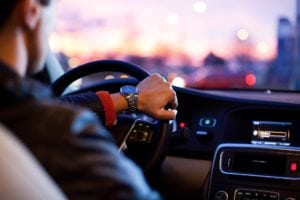Distracted Driving: Texting Isn’t the Only Problem
August 8, 2018 @ 7:03 pm

Driver-related errors are responsible for the vast majority of car accidents in the U.S. Before you quickly deny that you text or use your phone while driving, realize that there are many other everyday distracting behaviors that, while not illegal, still claim lives—the lives of drivers, their passengers and others on the road.
The Dangers of Distraction
Distractions force us to attempt to multitask, but the result can be disastrous because driving demands undivided attention from drivers. Active driving is a constant balance of sensory evaluation, motor coordination and decision-making skills. As the CDC points out, when we’re driving, distractions can compel us to:
- take our eyes off of the road
- remove our hands from the wheel
- redirect our attention to something other than driving
If something prompts us to do any of these, it’s a distraction and can lead to rear-end collisions, damage to property and even death.
Distractions in Motion
Although texting while driving is arguably the worst of distracting behaviors—and illegal in Louisiana—drivers are guilty of many others:
- 1. Driving while emotionally distressed—that is, visibly angry, sad, crying or emotionally agitated.
- 2. Adjusting seats, seat belts, floor mats, air-conditioning or heat or other settings and controls after we’re in motion.
- 3. Holding extremely animated conversations with passengers or looking at them.
- 4. Eating food or drinking beverages. Spills can be an additional distraction, and passenger food-related activities can also be challenging, especially if children are involved.
- 5. Using the rearview mirror to apply makeup or otherwise groom ourselves while driving.
- 6. Wearing clothing, shoes, jewelry or other personal accessories that require constant adjustment. Garb that catches on seat belts or mats, for example, can interfere with our attention and physical ability to drive.
- 7. Trying to brace or secure loose objects, scattered papers or unsecured packages in the passenger compartment of the vehicle.
- 8. Taking care of children who may be tired, hungry, argumentative or otherwise demanding of attention.
- 9. Caring for onboard pets. Failing to secure animals in carriers increases the risk of distraction as well as the danger of a pet becoming loose or injured.
- 10. Handling money, ATM receipts and wallets.
- 11. Playing music at such loud volumes that you can’t hear emergency vehicles.
- 12. Sightseeing and focusing on attractions rather than on the road.
- 13. Rubbernecking—gaping at collision, construction or breakdown scenes.
- 14. Writing or adjusting lists or notes.
Multi-Tasking While Driving Equals Liability
Busy lives leave many of us in a time crunch, but if you’re doing anything other than concentrating on the road while driving, you’re not really in control of your vehicle. If you’re not in full control of your vehicle and you’re involved in an accident, that distraction can make you at fault and liable.
Likewise, if you are the victim of an accident involving a distracted driver, you may have the right to compensation. Even though many behaviors are not technically illegal, they still pose a level of risk comparable to texting. Distracted driving accidents happen because, for some reason, a driver does not have full control of the vehicle, and the result can be catastrophic.
If you suspect that another driver’s distracted driving was the cause of your collision, personal loss or injury, contact the lawyers at Morrow, Morrow, Ryan, Bassett & Haik. You can schedule a free consultation through our website or call 1-800-356-6776.
